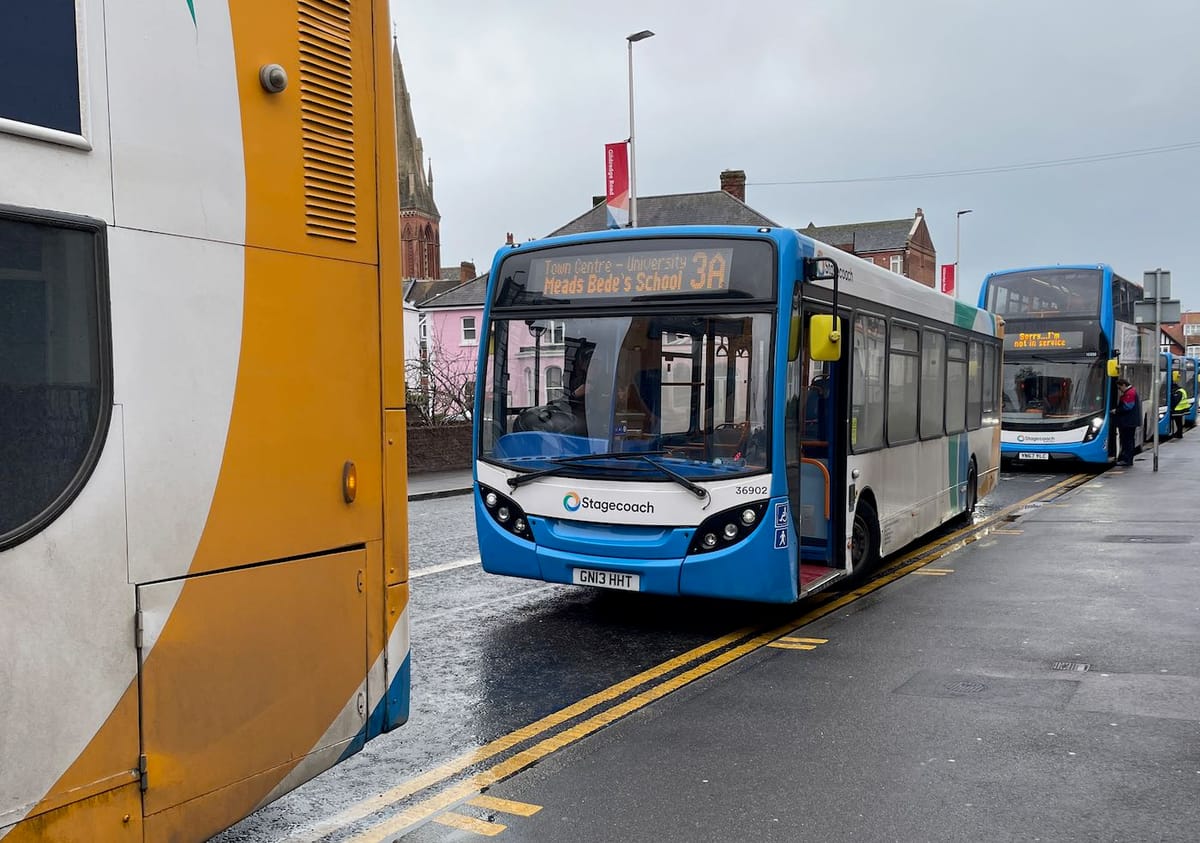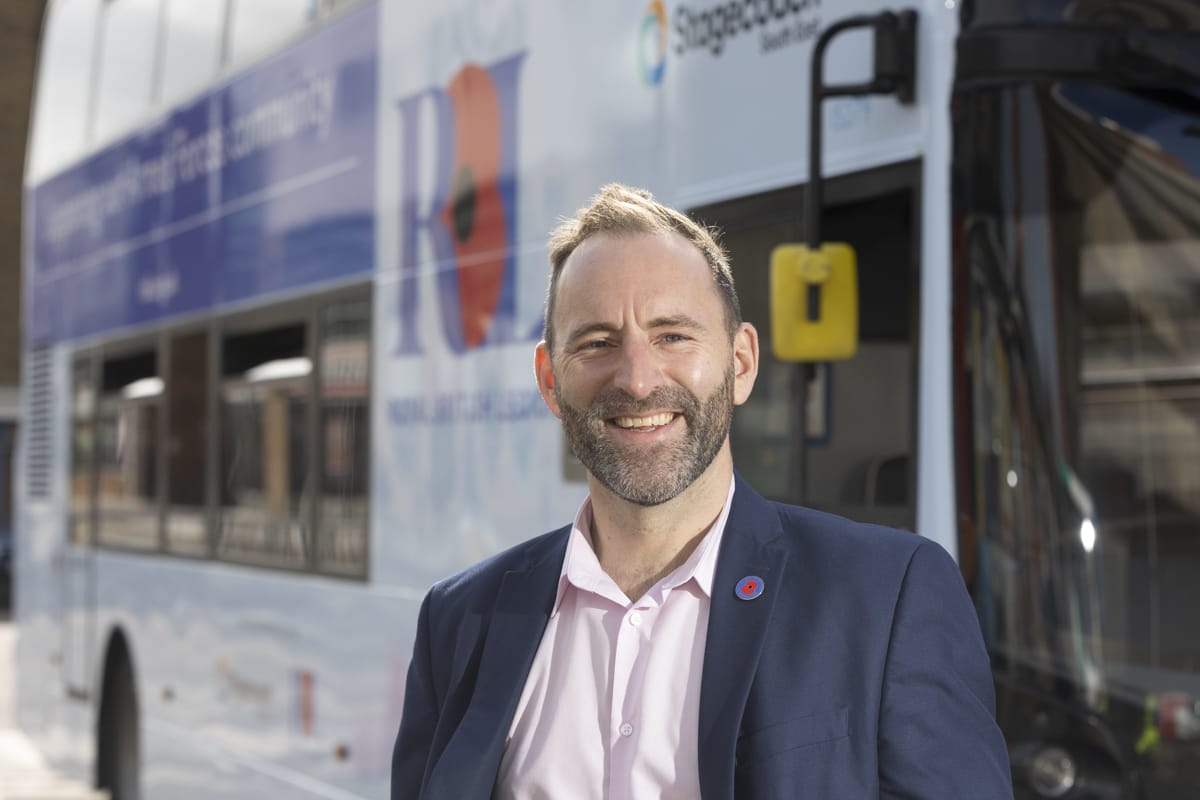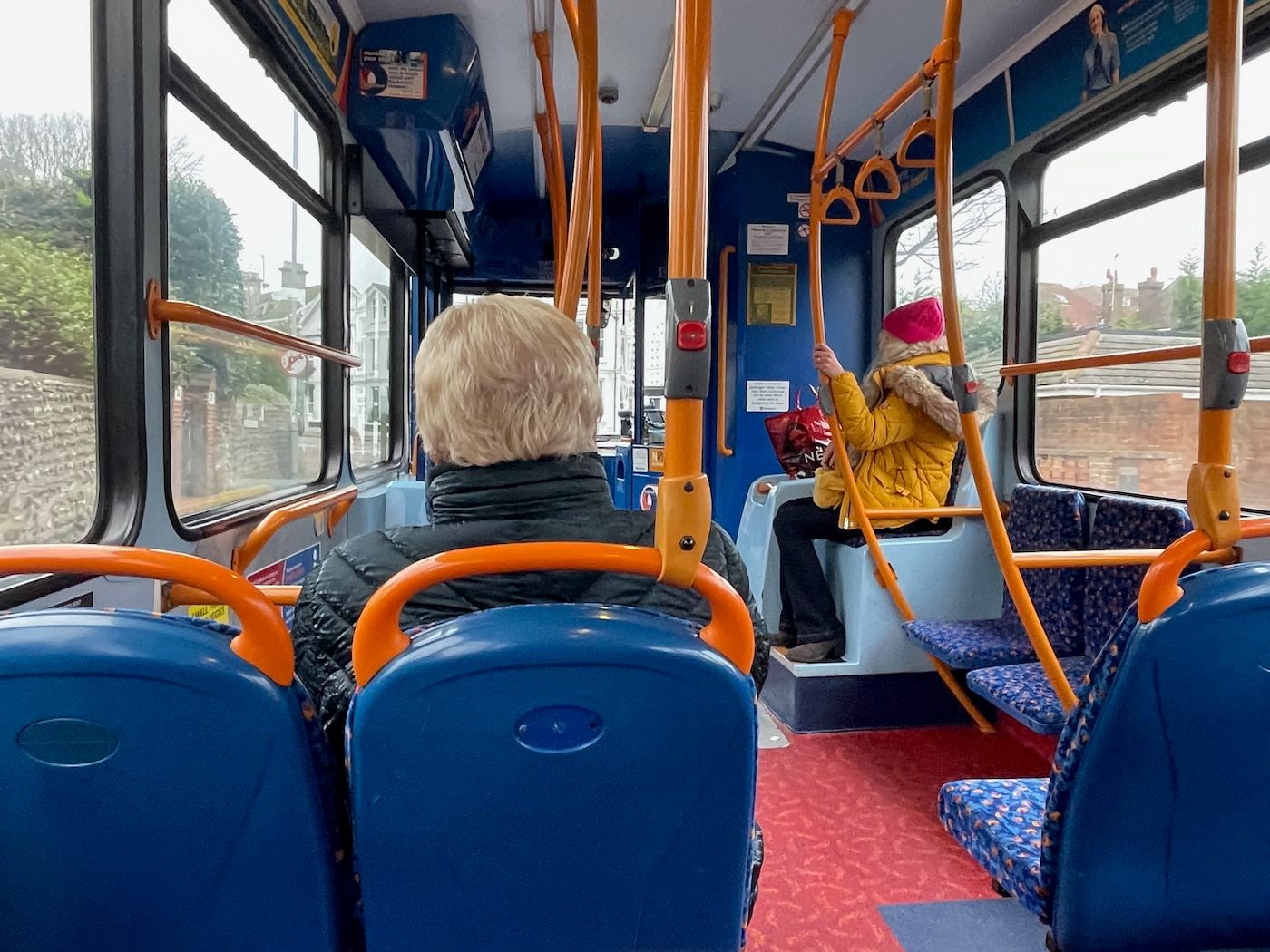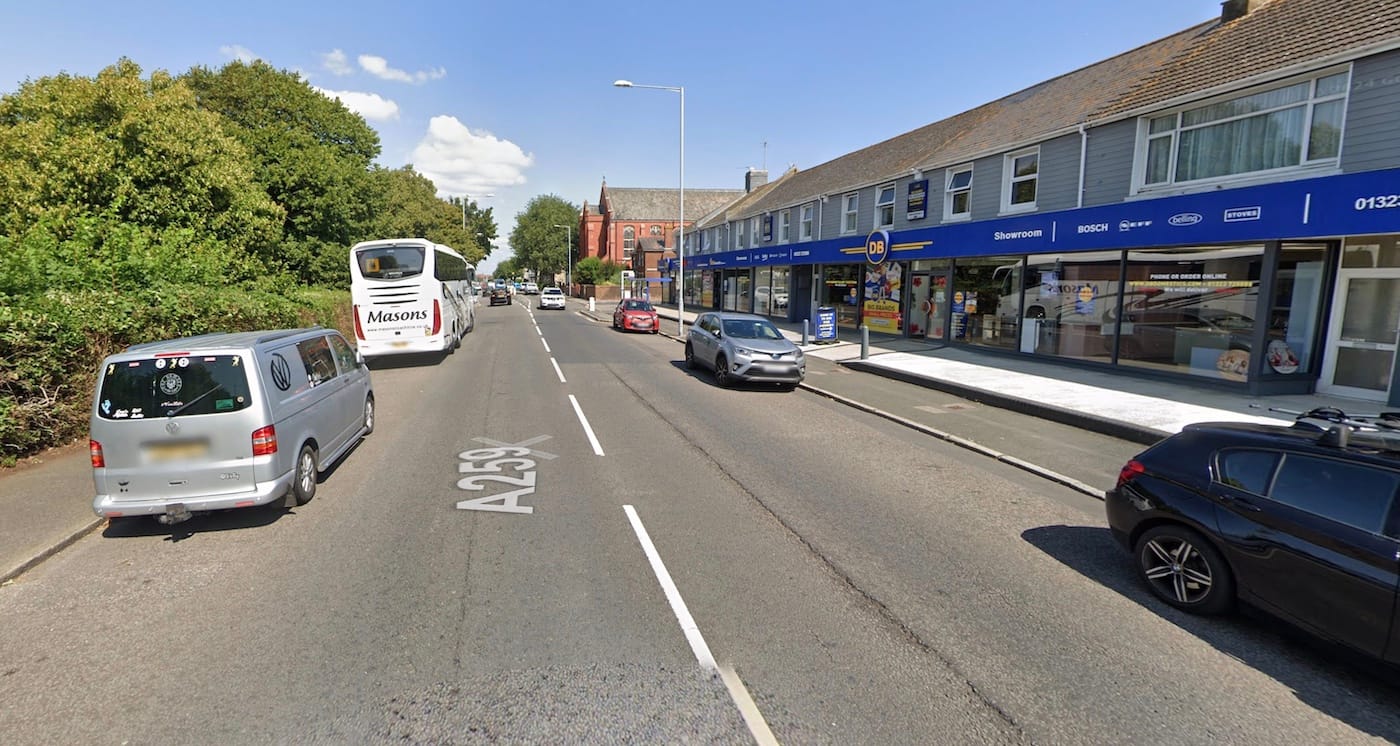'Separate buses from cars, so the bus is the choice'

Public transport in Eastbourne is nowhere near as widely used as in other areas of Sussex, such as Brighton and Hove.
Largely empty double-decker buses can be seen at peak times in Eastbourne, stuck in traffic queues of private cars. In the town, 25,000 miles of scheduled bus mileage a year are lost as journeys are cut short due to congestion.
What is the solution?
As Stagecoach South East timetable changes and some reductions in service start this week, Rebecca Maer talks in depth to the company’s boss to find out what the future holds.
The issue in brief
People seem reluctant to choose the bus, even when they have a free older person’s pass and know it is more sustainable, because the buses can be unreliable.
The buses are unreliable because they are often stuck in traffic.
They are stuck in traffic because many prefer to use their car rather than a bus.
And the buses are often older and uncomfortable because there is not enough income to invest in new vehicles.

How can this cycle of car use and traffic jams be broken?
Joel Mitchell, managing director of Stagecoach South East, is clear about what needs to happen.
He says it is about building enough separate lanes so buses are never stuck in traffic and can glide past queues, tempting people to use them as more efficient transport.
"If more people got out their cars and got on the bus, I could absolutely improve the buses and replace them all,” says Mr Mitchell.
Gridlock in Eastbourne
Congestion is a huge challenge for Stagecoach in Eastbourne: the town has the worst record of miles lost to the company in the south-east due to day-to-day congestion as buses sit in gridlocked traffic, unable to maintain the timetable.
Across its fleet, Stagecoach South East loses around 57,000 miles a year to congestion in Kent and East Sussex but Eastbourne alone accounts for nearly half that figure. The company loses just under 1% of bus mileage in Eastbourne due to traffic congestion.
It needs ten minutes more today to go the same distance as it did ten years ago.
JOEL MITCHELL
Stagecoach has six garages across East Sussex and Kent: Eastbourne, Hastings, Ashford, Dover, Thanet and Herne Bay.
Mr Mitchell says that in the last year or so, 25,000 bus miles in Eastbourne have been lost because the traffic is so bad: buses have to stop short of their destination to get back onto the scheduled timetable. The town has a problem even when there are no roadworks.
He says: “It is so difficult to keep to time. For every hour a bus is on the road, it needs ten minutes more today to go the same distance as it did ten years ago.”

Mr Mitchell says this leaves Stagecoach with two options: put another bus on to keep the same frequency but at a big extra cost or reduce the frequency and keep the existing buses on the route. This second option inevitably leads to passengers becoming annoyed at the lack of frequency and turning to car use.
“Then you are in a vicious cycle because that reduces revenue,” he says.
How do you make bus travel the first choice?
The real issue, Mr Mitchell maintains, is how do you make people want to use the bus. And he is in no doubt about the two key challenges.
Firstly, you have to make them attractive to use – and more attractive and cost-effective than driving and parking.
Secondly, the revenue needs to cover the operating costs, whatever the business model.
“The future of the bus industry relies on people using buses more, not putting fares up,” he says.
“To do that, you must, wherever practical, separate buses from cars so the bus is the choice rather than just being in the same queue as the cars.”
Clean, smart buses are clearly important but punctuality, reliability and frequency will all come from the physical changes of separating buses.
In addition to these challenges, Stagecoach says that the costs of operating in its area have risen by 38% in just the last three years: wages, materials and the costs of parts have all gone up.
Controversial cuts to No 51 timetable
Cuts to the No 51 bus timetable, taking it from half hourly to hourly, have led to a Change.org. petition started by East Sussex College media student Erin Wigham. It has attracted more than 1,200 signatures.
Erin, 20, who lives in Heathfield and uses the bus to get to the college on Cross Levels Way, Eastbourne, said she was pleased with the response and that it gave people a voice.
She said the service cuts came on top of frequent delays and cancellations. “I think it is absolutely disgraceful. The bus service is a lifeline for people in Heathfield, particularly for elderly and disabled people,” she told the Eastbourne Reporter.
Stagecoach maintains that the Hailsham to Tunbridge Wells section of the route is not sustainable for them, but passengers say if the buses were more reliable, people would use them more.

Mr Mitchell, speaking on BBC Radio Sussex on 18 March, responded to pleas from passengers not to reduce the timetable.
He said that the 51 route lost £1 million last year which threatened the viability of all the entire bus network in Eastbourne, so he had no option but to act.
“I absolutely hate cutting buses. But until we can get people using the bus, we are in a place where the operating losses are so huge on certain services, that they are just not sustainable.
"I promise I would not be doing this if there was any alternative.”
Mr Mitchell said he would be underwriting continuing losses on the route because it was not even viable as an hourly service.
He said the answer was more bus lanes and getting people out of their cars but acknowledged that the lack of frequency was a drawback.
Where does extra funding come from?
East Sussex has done better than many areas in securing money from the government’s £1.1 billion Bus Service Improvement Plan (BSIP). This is for capital infrastructure, fare promotion and additional services.
BSIP funding for East Sussex was initially £41.4 million although the local authority had asked for £100 million. The latest figures for allocations for the three years from 2022/23 to 2025/26 show a total of £51.3 million or £97.48 per head of population. This is in tenth place across 75 local authorities.
At the top end, Portsmouth City Council will receive £258.72 per head in bus funding, while Wokingham Borough Council will receive just £13.61 per head. Brighton and Hove City Council is in fifth place with £135.21 per head; West Sussex County Council is ranked 30th with £35.20 per head of population.
"I would love to get away from a break-even position to really invest and grow" Joel Mitchell
Mr Mitchell says the funding is useful but it should not be used to subsidise services which are socially necessary as can happen.
Mr Mitchell says: “BSIP is sensational support from central government but we are at a crossroads now.
“Local authorities need a long-term settlement from central government to fund socially-necessary services so we don’t have to use BSIP funding to do that.
“BSIP is for innovation and long-term strategic growth, not papering over the cracks.”
Why are Stagecoach buses old?
The company has a fleet of 400 buses in the south-east. It has taken delivery of 50 newer buses which have been in service in Manchester in the last few months.
Mr Mitchell says: “We have improved the average age of buses in Eastbourne recently. But the challenge is putting together a compelling business case for new buses on a network where you’re fighting tooth and nail to cover your operating costs.
“It’s difficult to build an investment case when you’re not generating the money to buy those buses.”
East Sussex County Council (ESCC) applied for funding for 28 fully-electric buses for Eastbourne under the Zero Emission Bus fund (Zebra 2) under which the Department for Transport bridged the gap between the cost of a £400,000 diesel bus and a £500,000 electric bus.
Unfortunately, the funding was not secured for East Sussex.
"Really good quality work went into that bid and that was incredibly disappointing because there was a moment there when we could have seen a shift,” says Mr Mitchell.
“There is good political intervention on what I would call short-term bus initiatives such as capped fares.
“It is the longer-term physical stuff that requires capital investment which will really shift the dial. Getting that agreed and over the line takes brave decision making.”
Reasons to be cheerful
A full double-decker bus can take up to 80 cars off the road. One diesel engine bus has lower emissions than a family car, even before you take into account electric buses.
Mr Mitchell says: “It is very difficult to encourage people out of their cars. Physical infrastructure changes are needed to create bus lanes and bus priority measures.
“Then we can then encourage people out of their cars because the bus isn’t involved in the traffic jam any more, it is free flowing in another traffic lane.”

A controversial bus lane has been agreed for Seaside in Eastbourne after compromises on the design.
Mr Mitchell says: “I understand why some people were anti and, from a local business perspective, I get their position. But from a macro, Eastbourne-town level, not just Seaside, it’s absolutely the right thing to do to free up buses.
It will save up to seven minutes on journey times which means Stagecoach can increase frequency at a lower cost.
“I am excited about Eastbourne because when the Seaside bus lane is in place, it will be a good case study to show how more bus lanes will help.”
Mr Mitchell points to Brighton and Hove, where he says there was political will to create a transport system where it is not worth driving due to parking costs, and the bus service is frequent and efficient.
“My overriding sense is of optimism: there are a lot of really good people who only want the best for the community they serve. I would love to get away from a break-even position to really invest and grow.
“If we care about the environment, which most people say they do, the bus has to be the right thing to do for the environment, the economy, for society.”
:: We have approached ESCC for an interview with Cllr Claire Dowling, lead member for transport and environment, but the council has so far not responded.
:: If you think this type of journalism, which involves interviews and research, is better than reading PR handouts presented as ‘news’, please support me. It’s free to read but not free to produce. One-off donations are here or become a member for just the price of a coffee here.


